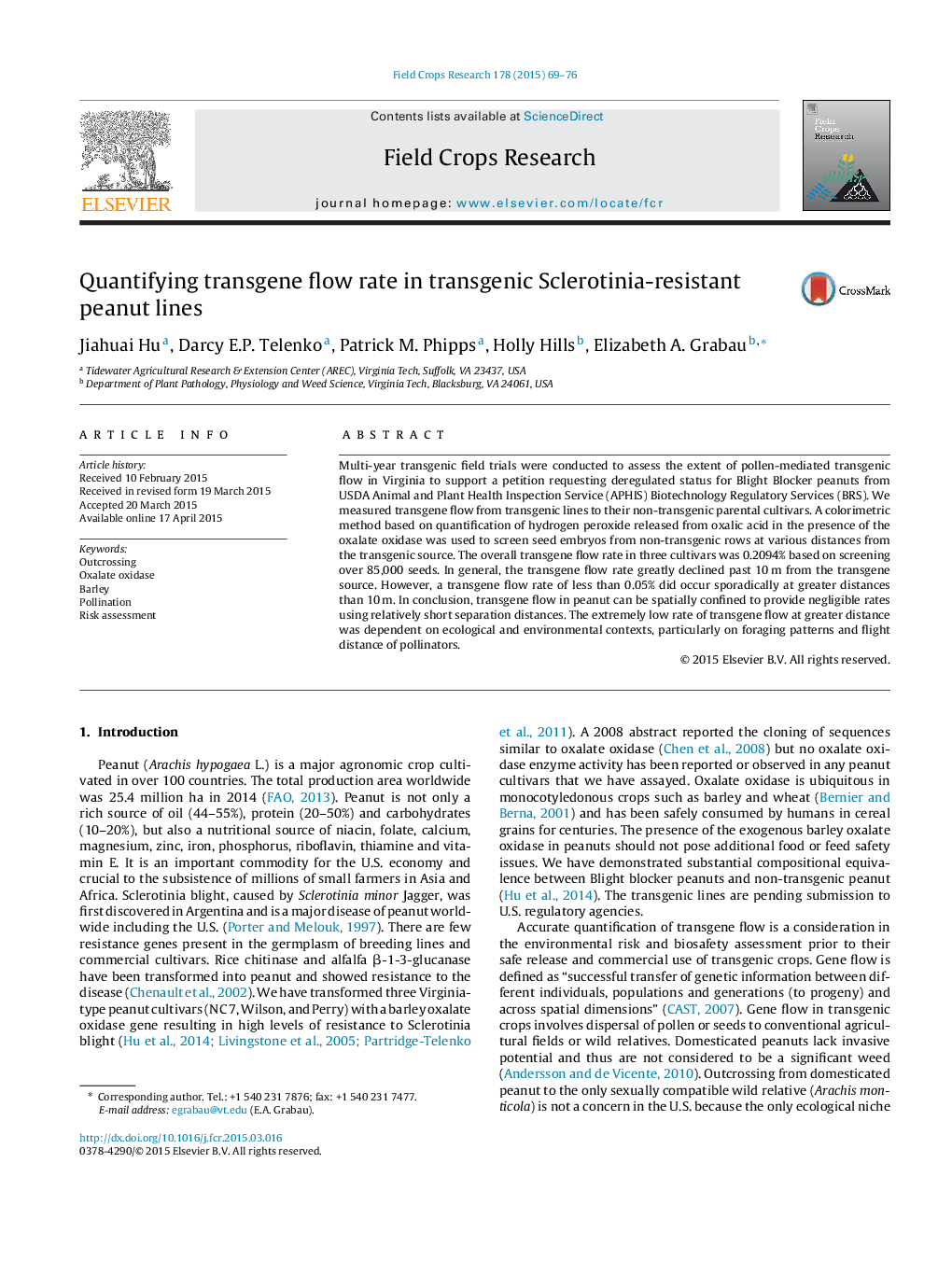| Article ID | Journal | Published Year | Pages | File Type |
|---|---|---|---|---|
| 6374839 | Field Crops Research | 2015 | 8 Pages |
â¢Gene flow from transgenic peanut lines to parents was measured in field trials.â¢The overall transgene flow rate was 0.2094% based on screening over 85,000 seeds.â¢Transgene flow rate greatly declined beyond 10 m from transgene source.â¢<0.05% transgene flow rate did occur sporadically at greater distances than 10 m.â¢At distance >10 m, gene flow rate was dependent on foraging patterns of bees.
Multi-year transgenic field trials were conducted to assess the extent of pollen-mediated transgenic flow in Virginia to support a petition requesting deregulated status for Blight Blocker peanuts from USDA Animal and Plant Health Inspection Service (APHIS) Biotechnology Regulatory Services (BRS). We measured transgene flow from transgenic lines to their non-transgenic parental cultivars. A colorimetric method based on quantification of hydrogen peroxide released from oxalic acid in the presence of the oxalate oxidase was used to screen seed embryos from non-transgenic rows at various distances from the transgenic source. The overall transgene flow rate in three cultivars was 0.2094% based on screening over 85,000 seeds. In general, the transgene flow rate greatly declined past 10Â m from the transgene source. However, a transgene flow rate of less than 0.05% did occur sporadically at greater distances than 10Â m. In conclusion, transgene flow in peanut can be spatially confined to provide negligible rates using relatively short separation distances. The extremely low rate of transgene flow at greater distance was dependent on ecological and environmental contexts, particularly on foraging patterns and flight distance of pollinators.
